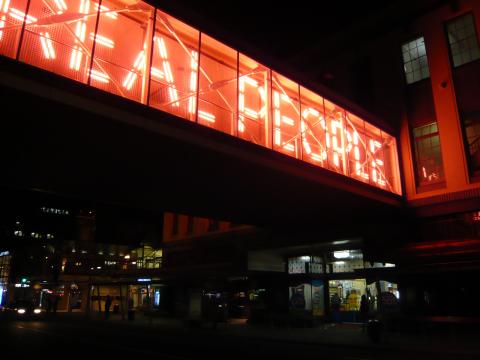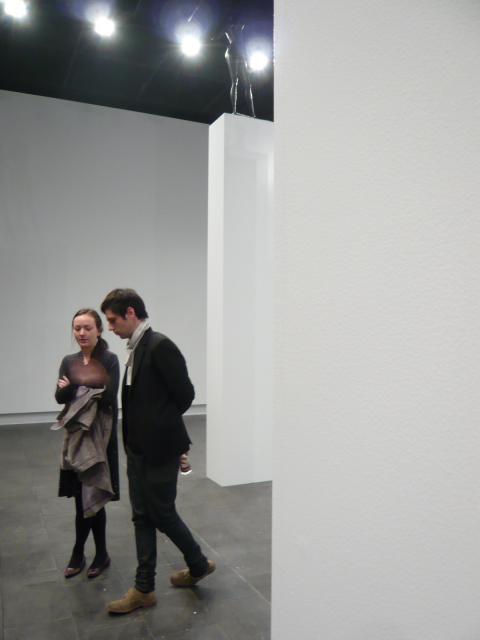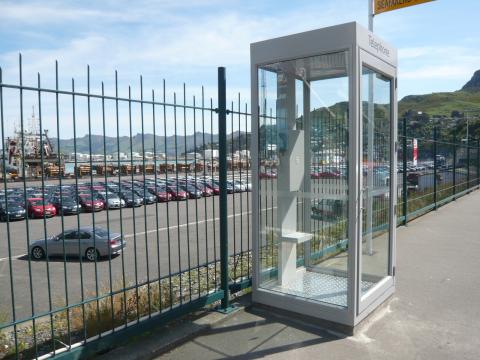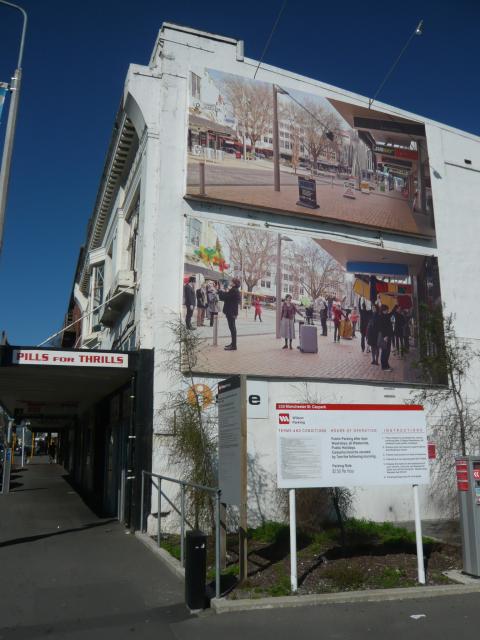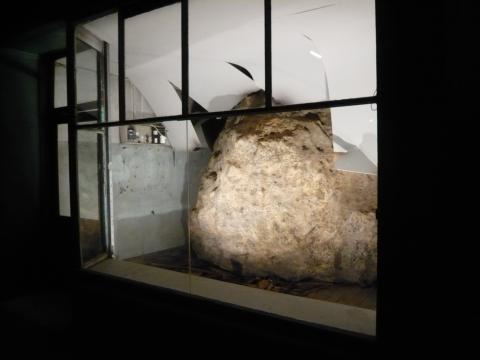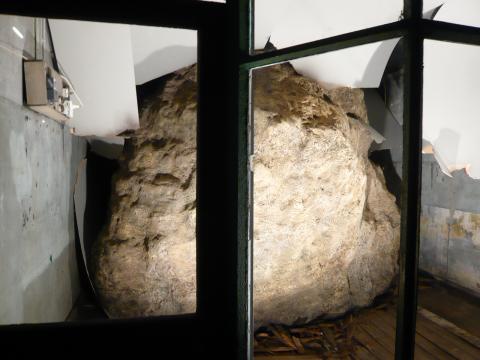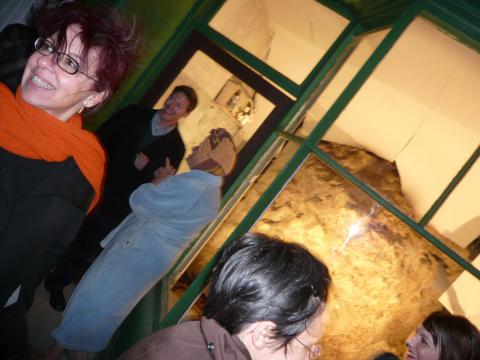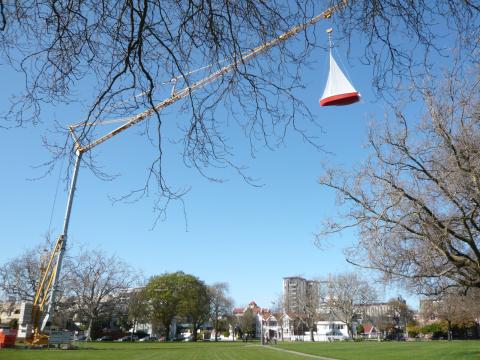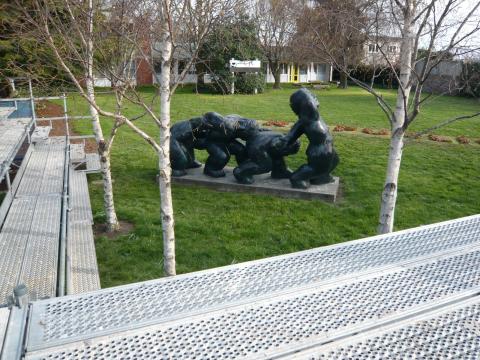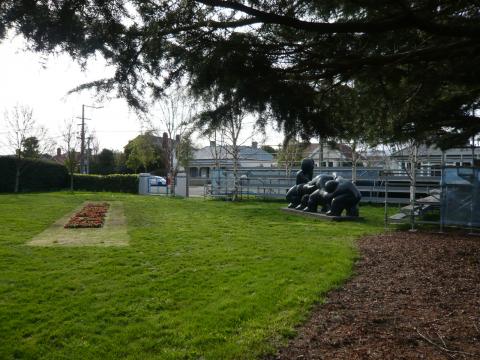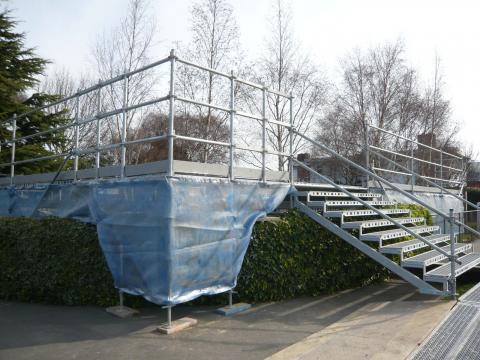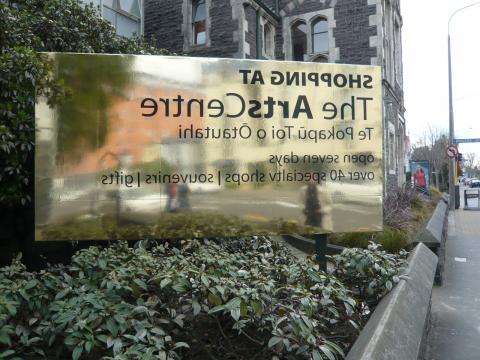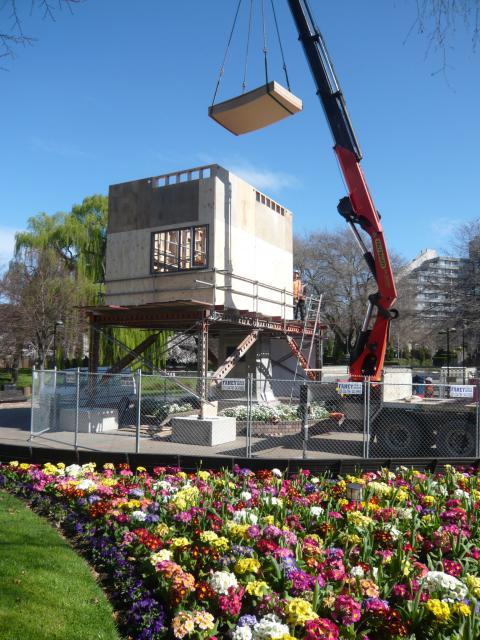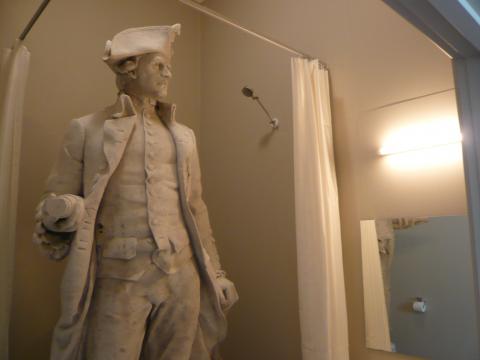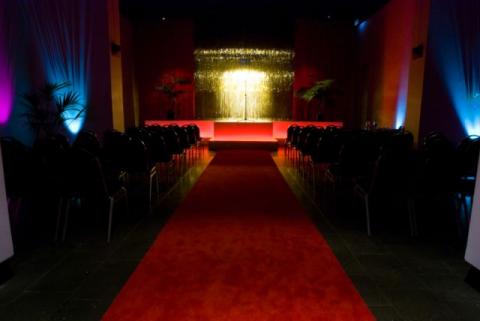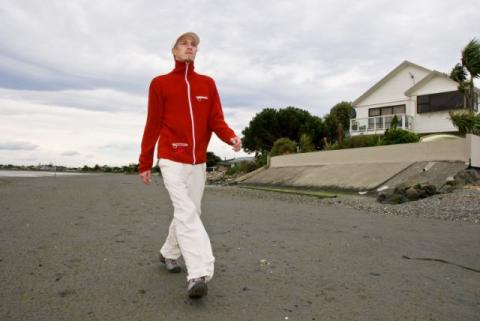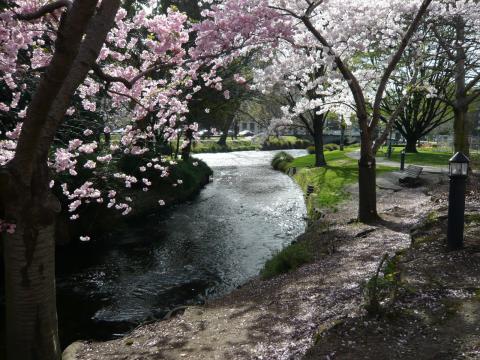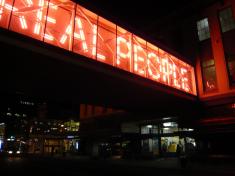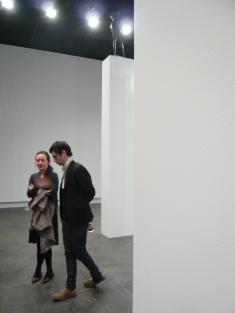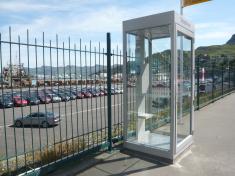Rob Garrett
Curator
Crash landings
SCAPE 2008 Christchurch Biennial
From crash landings to dangerous prohibitions: Rob Garrett reviews SCAPE 2008 Christchurch Biennial of Art in Public Space, 19 September-2 November 2008.
Fulya Erdemci and Danae Mossman’s Wandering Lines is the most coherent and interesting SCAPE biennial of art in public space in Christchurch in the event’s ten year history. Appropriately, the biennial’s coherency draws from the collegiality of the two curators; the clarity of their vision; the openness of their brief to artists; and the calibre of the artists.
If public space is under negotiation, the Turkish and New Zealand curators optimistically defined it as “the negative space between private space, the sky, the floor and the façade.” But they were interested in shifting from simple optimism to idealism by inviting artists to create work that could “oppose” the grid of the city’s structure; present new visibilities for public space; and “find out unusual ways of looking or experiencing.” Though such rhetoric is not unique in itself, what was refreshing was the fact that many of the 25 projects actually did interrupt, run against the grain, refigure, restore, uncover and manifest unusual public spaces. SCAPE 2008 demonstrated that the idealism of seeking “errant trajectories” can be realised in the right hands. From Elmgreen and Dragset’s ringing phone in a public phone box overlooking the port at Lyttelton – lift the handset and a voice says “I’m thinking of you” – and Guillaume Bijl’s transformation of a gallery into a “Miss Christchurch” theatre; to James Oram’s small sailing boat suspended by a crane over one of the city’s pocket parks; and Ayşe Erkmen’s golden cashier bags which replaced various retail stores’ usual shopping bags, and wandered across the city as a kind of mobile sculpture.
Callum Morton’s Monument #19: Sexy Beast literally seemed to drop into a small disused suburban fruit shop in Christchurch from Erdemci’s public-space-sky. The rock’s presence invoked an extra-terrestrial awareness that while outer space is remote, it has not yet been entirely privatised. If this is too far-fetched an idea to collide with the rhetoric of art in public spaces, Morton’s giant rock certainly crash-landed in a fittingly idiosyncratic suburb of Christchurch.
Linwood is a neighbourhood already a bit of an oddity, and quite marginal to the city’s aspirational place making. It sits between city and suburb and is a mishmash of older suburban, less old light industrial and rail infrastructure, and more recent sales rooms and sale yards. It is one of the city’s happen-stance zones in marked contrast to preciously restored, over-designed, and tourist populated arts and heritage precincts only four blocks away. If gentrification encroaches this far it will likely level rather than restore the present built environment. Ironically, Morton’s boulder (or wrecking ball) crash-landed into the interior of the tiny shop without destroying the building’s exterior fabric.
Re-public Park by Zones Urbaines Sensibles (ZUS), the Rotterdam-based duo Elma van Boxel and Kristian Koreman, created one of the strongest personal spatial and cultural dislocations for me of all the projects. ZUS selected a small public park on a street corner that seems private because it is hedged, gated and leads up to a low building occupied by architects’ offices.
The artists erected metal bleachers atop the hedge, extending along the two adjacent sides of the park from the street corner, with wide steps leading up from the street. The right-angle of the tiered viewing platform enclosed a small grove of birch trees and a bronze sculpture of four naked figures in an out-of-time heroic manner (nowhere acknowledged as by local artist Llew Summers) that were already in-situ, and a the new addition of a band of close-mowed lawn and flower plot that spelled out RE-PUBLIC. Refiguring extant elements with the addition of a viewing platform and a declamatory flower bed created a subtle reshaping of the park; and it felt like I could be standing in small-town Lithuania or Poland. The gesture was slightly at odds with a local aesthetic and thereby underscored the way ideological aesthetics is played out in so many new civic places, whereby what counts as public space is shaped by the types of trees, length of grass, flower beds, viewing positions, and style of art works that compose them.
Tatzu Oozu specialises in providing people with private experiences of public monuments, mostly by building a room around the figurative element of an existing monument to place viewers at close quarters with what is usually distant and elevated. The room brings viewers to the level of the statue and leaves the plinth exposed in amongst the scaffold that supports the temporary room. For the Liverpool Biennale he built a hotel suite around the grand marble statue of Queen Victoria and invited people to stay the night: “Even you can spend time with the Queen.” In Basel people could climb to the top of the Cathedral and enter an apartment room to visit one of the Dom’s rooftop angels transformed into a coffee table statue. In Christchurch Oozu chose the William Trethewey statue of Captain James Cook (1932) and ‘placed’ the explorer in a bathtub. Oozu creates experiences that don’t so much subvert public space as create the possibility of personal intimacy within it and new experiences of it.
Erdemci worked with Brazilian artist Gross in 2007, asking the artist to ship her work Aurora (sunrise) from São Paulo (where it referred to a red-light district street) to the 2nd Moscow Biennale, where high above a vast construction zone, in the falling snow, it shone as a bright pink reference to Lenin’s Soviet Revolution ship. Selected for SCAPE for the poetic lightness of her touch with powerful words, Gross was surprised that half her project was prohibited by Christchurch’s city council.
Gross’s site specific response to Christchurch proposed two phrases, poetically linked yet structurally separated: REAL PEOPLE / ARE DANGEROUS. The first phrase was to be spelled out in fluorescent tubes along a glassed pedestrian overbridge and the second along a similar elevated walkway several city blocks removed. REAL PEOPLE was permitted and installed. ARE DANGEROUS was “not possible” according to artist, partly because of its proximity to red traffic lights in the street below, but also because “the word ‘dangerous’ is really strong for everyone.”
While the artist and curators seemed sanguine because the situation enabled the “condition of public art” to be discussed it is doubtful whether the power of thought and the powers of forbidding were likely to come together in the same room and make any worthwhile movement away from fear. The prohibition was a sad consequence of the Biennial’s invitation to artists to “oppose the city’s grid” in a city where the grid runs deeper than the street layout.
Previously published in Art World, Issue 7, February/March 2009, pp148-149. (With extra photographs.)
